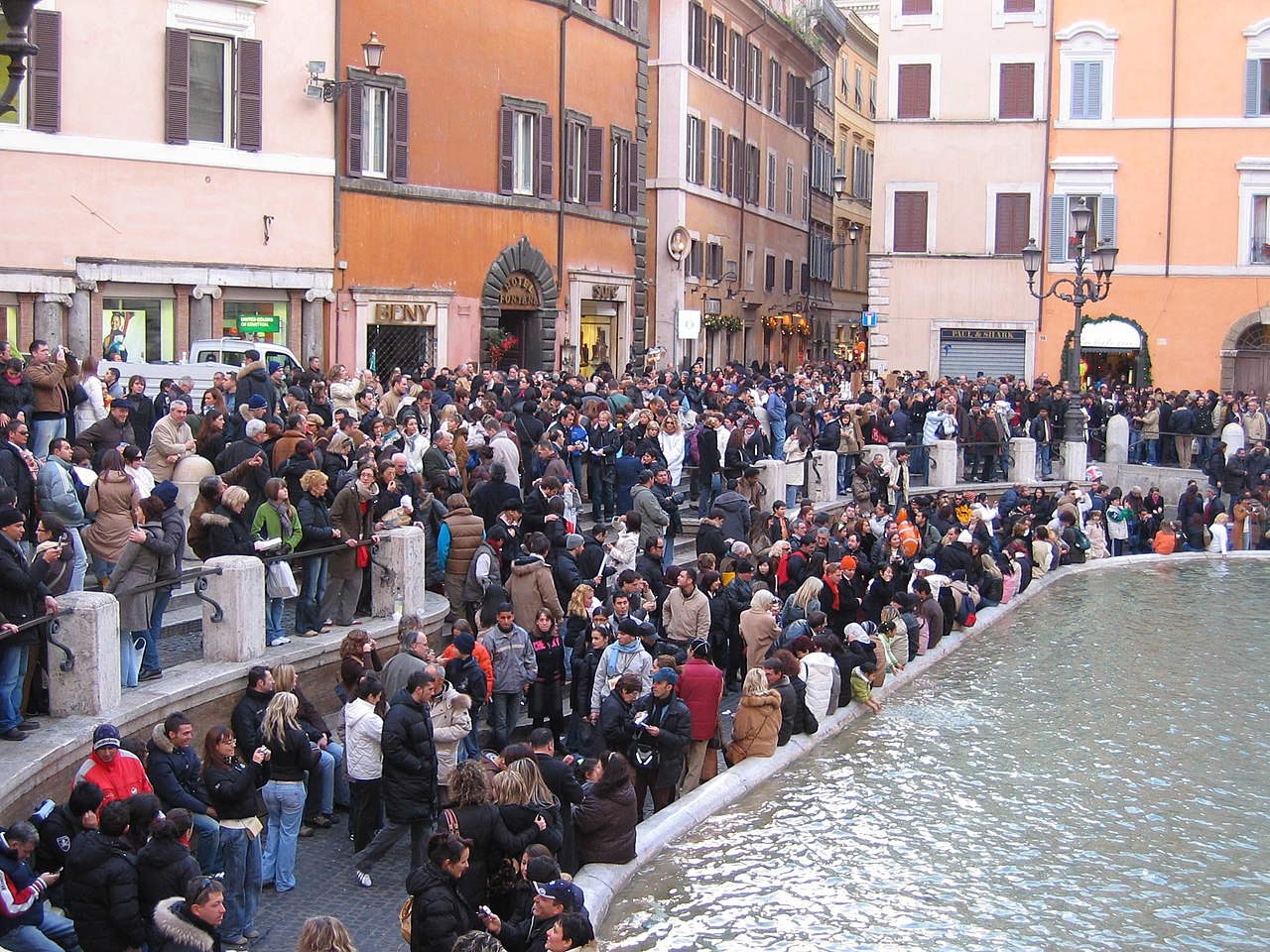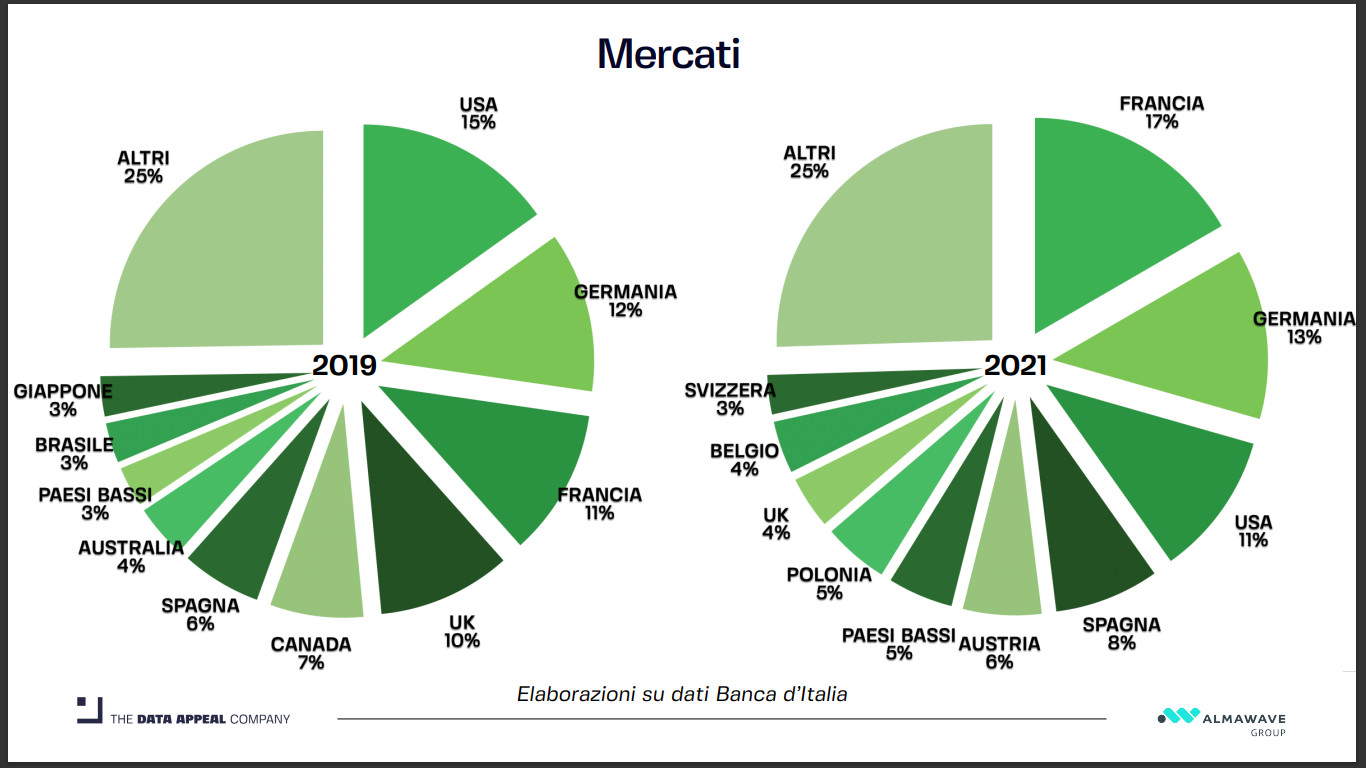Thearticle on the 5 Terre Park study that quantifies data in hand that 4 millionvisitors are concentrated in a single square kilometer (equal to 1 percent of the entire territory of the Park) once again actualizes the problematic nature that massive tourism distributed unevenly creates as repeatedly reported in recent years by cities of art.
And on the many reactions that there have been to the study of the 5 Terre Park, to get a proportion of the phenomenon on a national scale, it is enough to refer to the data of a report presented in the last edition of Tourisma, the Archaeology and Cultural Tourism Show, and be impressed by its size: 70 percent of foreign tourists (of which 5 nationalities account for 55 percent: 15 percent from the United States, Germany 12 percent, France 11 percent, United Kingdom 10 percent and Canada 7 percent), driven as their travel motivation by cultural interest, concentrate on 1 percent of the Italian territory.
Processing consolidated Bank of Italy and Istat data was The Data Appeal Company, which compared the years from 2019, the last before Covid, and 2021 under the aspect of cultural tourism. In 2021 there were 23.9 million international presences divided among the classic destinations of a trip to Italy: Rome 20.9%, Venice 16.9%, Florence 9.8%, Milan 7.3%, Naples 4.1%, Bari 3.0%, Verona 2.3%, Bologna 2.1%, Turin 1.6% and Pisa 1.3%. The total spending of 16.1 billion in 2019 by tourists was reduced to 3.3 in 2021 and 115.2 million overnight stays compared to 23.9 million in 2021, a decline in both cases of 79% for foreigners, and 29%. The average daily expenditure of the “cultural tourist” is around 140 euros for foreigners, much less for Italians.


 Data from the
Data from theWith this data, it is easy to understand the complaints of mayors of art cities who see tourist flows no longer as a positive source of well-being for their community but rather as a problem to be managed, i.e., theovertourism, which, often in medium-sized cities, sees millions of people a year arriving (there were 115.2 million foreign cultural vacationers in our cities of art in 2019) with their take on “consumption” of the city. In 2019, the most visited cities were: Rome 28.3%, Venice 15.8%, Florence 10.7%, Milan 6.1%, Naples 4.5%, Palermo 1.7%, Verona 1.3%, Catania 1.3% and Pisa 1.2%, which with the pandemic from Covid change the number of visitors but maintain at the same proportion: Rome 20.9 percent, Venice 16.9 percent, Florence 9.8 percent, Milan 7.3 percent, Naples 4.1 percent, Bari 3.0 percent, Verona 2.3 percent, Bologna 2.1 percent, Turin 1.6 percent and Pisa 1.3 percent (for a total of about 29 million tourists).
About the nationalities of origin after the top 5 markets mentioned above we see that in addition to Spain at 6% or the Netherlands 3%, substantial share of tourists with cultural motivation comes from Australia 4%, Brazil 3% and Japan 3%. Countries far away then for which Italian cultural and artistic heritage is a strong constant travel motivation over the years
The report by The Data Appeal Company also provided data that emerged from its own monitoring system on 130 online sources such as generalist or specialized search engine sites, from Google to Tripadvisor, from Expedia to The Fork, from Facebook to Airbnb, and many other platforms. The analysis done on 2021 and 2022 showed that for attractors, 97.7 percent of content comes through Google. And there are 73 thousand points of interest analyzed by The Data Appeal Company, including 6 thousand attractors (museums, monuments, churches, squares, etc.) of the localities that fall under the offer of cities of art and cultural landscape. A bulk of 11 million digital data including 1.4 million concerning attractors.
Based on the data analyzed by The Data Appeal Company’s algorithms and Artificial Intelligence, it was predicted that by 2023 the cultural tourism sector will return to 2019 levels albeit with a generalized double-digit cost increase.
The bet for administrators is to manage the mass of tourists arriving engulfing services for residents, and making it increasingly hectic to visit on a hit-and-run basis such as cruise passengers disembarking in Livorno and then on a day trip going by bus to Florence, Siena and Pisa with return by ship in the evening....). Attempts such as changing the cost of the ticket according to times or months, as is done at the Uffizi, are attempts to help deseasonalization. How to rebalance the distribution of tourist flows and succeed in bringing out lesser-known destinations is one of the goals.
Noteworthy is the report’s "sentiment index,“ which stems from user coding on 130 monitored sites (with 11million digital data considered between 2021 and 2022) and ranks comments and appreciations on accommodations, venues, dining, attractions and short rentals: very good on ”atmosphere and beauty of spaces,“ ”exhibition“ and ”location,“ worse when it comes to ”accessibility“ ”costs and services“ and ”inclusiveness" with the LGBTQ+ index.
The museums most appreciated by internet-nauts are Castel Sant’Angelo with a rating of 94.6/100, the Uffizi Gallery 92.8, the Reggia di Caserta 92.3, the Gallerie dell’Accademia 91.4, and the Museum of Cinema in Turin 90.9. A complex and highly detailed picture that returns a snapshot of the digital tourist, who visits Italy smartphone in hand and expresses his experience live at all levels: from the photo of the Neapolitan square put on Instagram to the hotel comment on Booking. Whichever way one looks at the phenomenon of comment/review/reaction on social media and the web, this phenomenon determines the real life of facilities by influencing in one way or another the fortunes of each of the subjects commented on, including museums and places of art.
 |
| Overtourism, 70% of foreigners in Italy concentrate on 1% of the territory |
Warning: the translation into English of the original Italian article was created using automatic tools. We undertake to review all articles, but we do not guarantee the total absence of inaccuracies in the translation due to the program. You can find the original by clicking on the ITA button. If you find any mistake,please contact us.